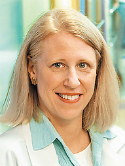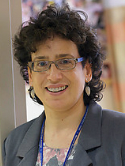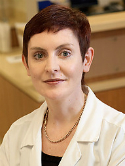Availability of cord blood extends allogeneic hematopoietic stem cell transplant access to racial and ethnic minorities Journal Article
| Authors: | Barker, J. N.; Byam, C. E.; Kernan, N. A.; Lee, S. S.; Hawke, R. M.; Doshi, K. A.; Wells, D. S.; Heller, G.; Papadopoulos, E. B.; Scaradavou, A.; Young, J. W.; van den Brink, M. R. M. |
| Article Title: | Availability of cord blood extends allogeneic hematopoietic stem cell transplant access to racial and ethnic minorities |
| Abstract: | Allogeneic transplant access can be severely limited for patients of racial and ethnic minorities without suitable sibling donors. Whether cord blood (CB) transplantation can extend transplant access because of the reduced stringency of required HLA-match is not proven. We prospectively evaluated availability of unrelated donors (URD) and CB according to patient ancestry in 553 patients without suitable sibling donors. URDs had priority if adequate donors were available. Otherwise ≥4/6 HLA-matched CB grafts were chosen utilizing double units to augment graft dose. Patients had highly diverse ancestries including 35% non-Europeans. In 525 patients undergoing combined searches, 10/10 HLA-matched URDs were identified in 53% of those with European ancestry, but only 21% of patients with non-European origins (P < 001). However, the majority of both groups had 5-6/6 CB units. The 269 URD transplant recipients were predominantly European, with non-European patients accounting for only 23%. By contrast, 56% of CB transplant recipients had non-European ancestries (P < 001). Of 26 patients without any suitable stem cell source, 73% had non-European ancestries (P < 001). Their median weight was significantly higher than CB transplant recipients (P <001), partially accounting for their lack of a CB graft. Availability of CB significantly extends allo-transplant access, especially in non-European patients, and has the greatest potential to provide a suitable stem cell source regardless of race or ethnicity. Minority patients in need of allografts, but without suitable matched sibling donors, should be referred for combined URD and CB searches to optimize transplant access. © 2010 American Society for Blood and Marrow Transplantation. |
| Keywords: | adolescent; adult; child; preschool child; school child; aged; child, preschool; middle aged; transplantation, homologous; young adult; major clinical study; myeloproliferative disorder; bone marrow cells; demography; multiple myeloma; hematopoietic stem cell transplantation; hodgkin disease; cord blood; acute leukemia; cord blood stem cell transplantation; hematologic malignancy; myelodysplastic syndrome; nonhodgkin lymphoma; fetal blood; hematologic neoplasms; infant; hematopoietic stem cells; new york city; living donors; cell count; lymphatic leukemia; hla a antigen; hla b antigen; ethnicity; graft recipient; aplastic anemia; continental population groups; ethnic groups; allogeneic transplantation; minority groups; histocompatibility; health services accessibility; unrelated donor; organ donor; prolymphocytic leukemia; histocompatibility testing |
| Journal Title: | Biology of Blood and Marrow Transplantation |
| Volume: | 16 |
| Issue: | 11 |
| ISSN: | 1083-8791 |
| Publisher: | Elsevier Inc. |
| Date Published: | 2010-11-01 |
| Start Page: | 1541 |
| End Page: | 1548 |
| Language: | English |
| DOI: | 10.1016/j.bbmt.2010.08.011 |
| PUBMED: | 20800103 |
| PROVIDER: | scopus |
| PMCID: | PMC3685152 |
| DOI/URL: | |
| Notes: | --- - "Cited By (since 1996): 1" - "Export Date: 20 April 2011" - "CODEN: BBMTF" - "Source: Scopus" |
Altmetric
Citation Impact
BMJ Impact Analytics
MSK Authors
-
 512
512Kernan -
 400
400Heller -
 618
618Van Den Brink -
 246
246Scaradavou -
 420
420Papadopoulos -
 335
335Barker -
 320
320Young -
 12
12Hawke -
 24
24Jorgensen -
 9
9Lee -
 1
1Doshi -
 29
29Wells
Related MSK Work



